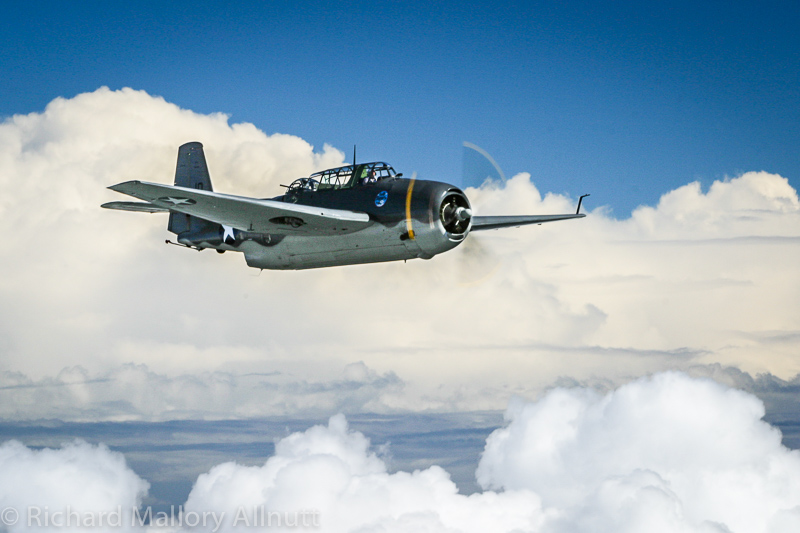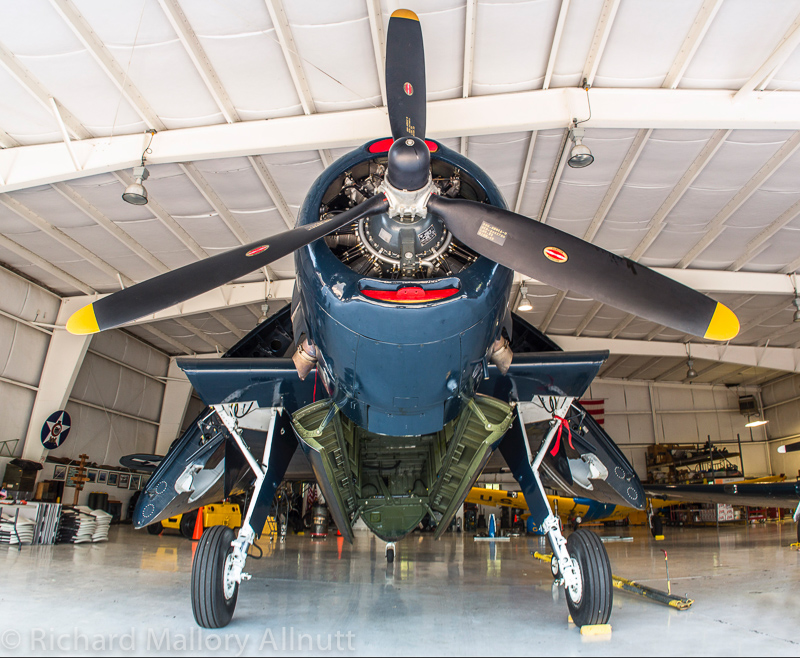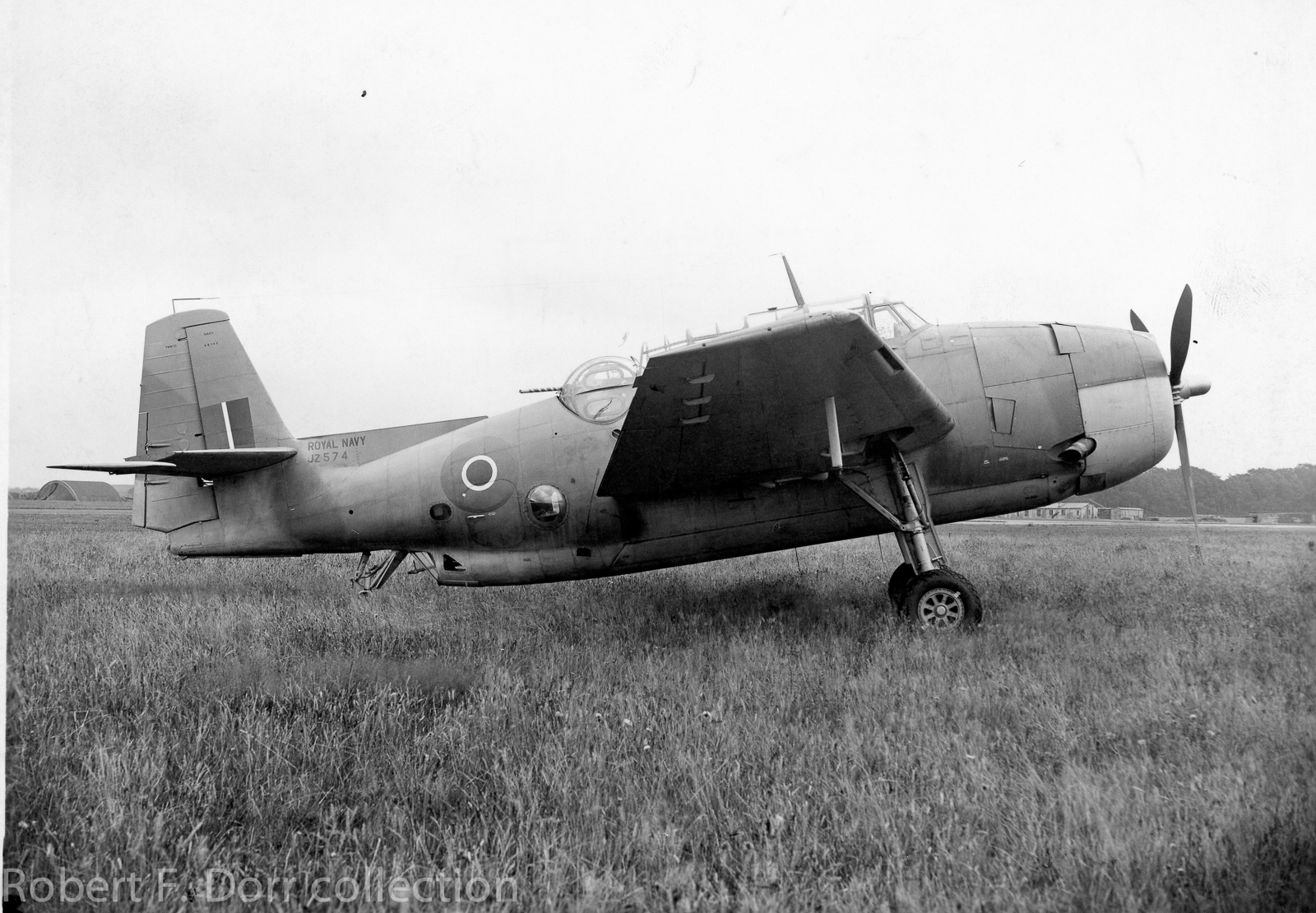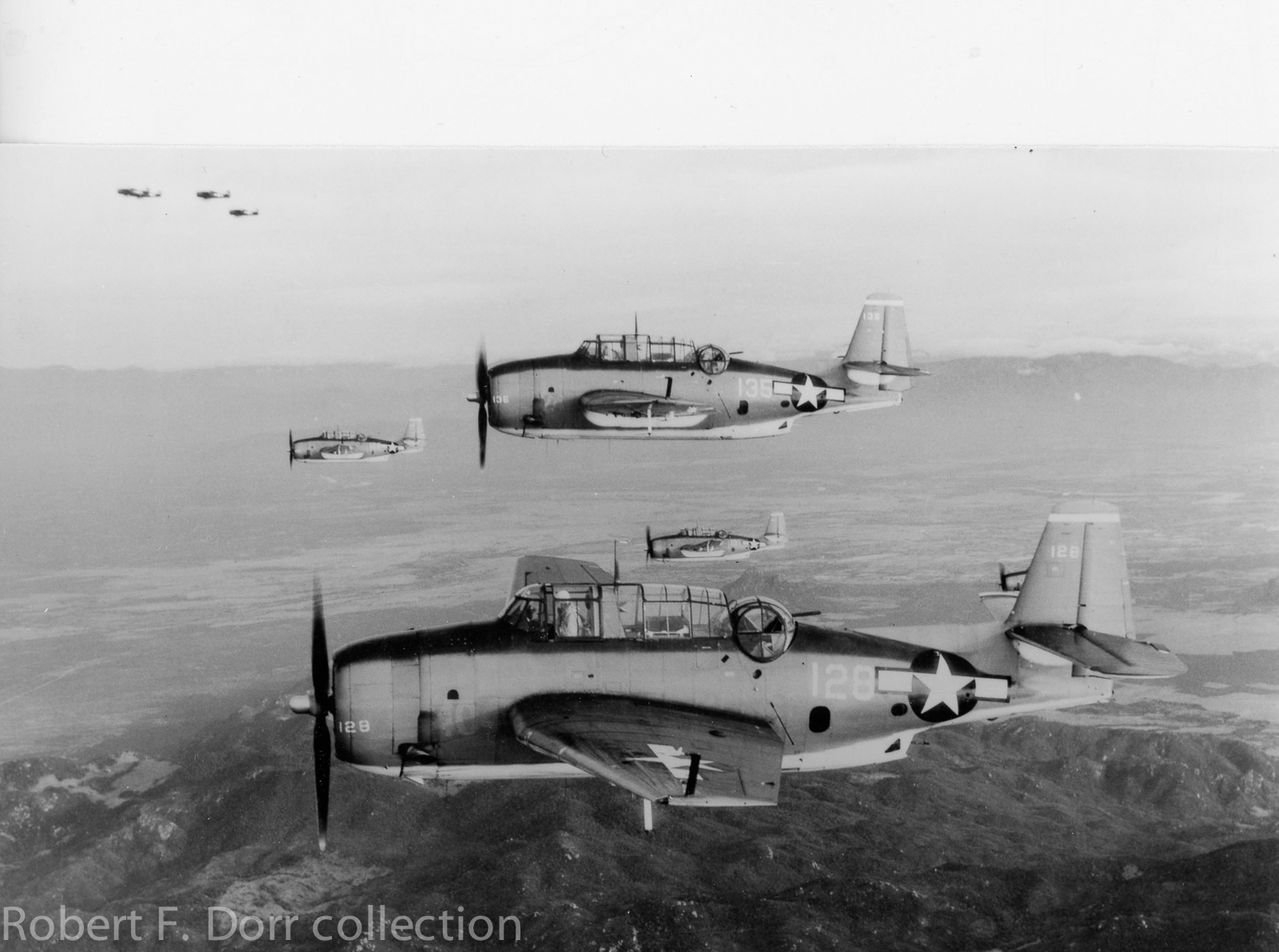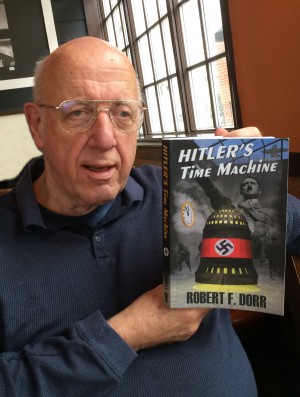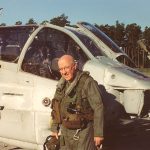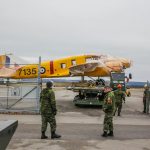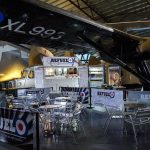WarbirdsNews is proud to present the first in our series of articles by noted aviation historian and author, Robert F. Dorr. In this piece Dorr will discuss the Grumman Avenger, and you will find some fascinating details to reflect upon, especially some of the first-person quotes from those who flew them during WWII.
“Not a fighter:” Explaining the TBM-3E Avenger
By Robert F. Dorr
If you’ve noticed the by-line, you may remember me as an author on aviation topics — and, more recently, alternate history. But you may not know that I’m a member of the Commemorative Air Force and that I often greet visitors to the CAF’s National Capitol Squadron hangar at Culpeper Regional Airport in Virginia. One of my duties is to tell visitors about a big, blue hunk of war machine that dominates the hangar when it’s not flying. You need only a glance to know that the TBM-3E Avenger torpedo-bomber is one big, robust specimen of a combat aircraft. Our Culpeper-based TBM-3E (Bu.No.91426/N49402) is finished in the colors of Marine Corps squadron VMTB-143, the “Rocket Raiders,” which operated in the Pacific Theatre from the escort carrier USS Gilbert Islands (CVE 107) during late World War II.
When big means BIG
Visitors are invariably surprised by the Avenger’s size. It has a 54-ft 2-in (16.51-m) wingspan and a typical takeoff weight of 17,893 lb (8115 kg). The TBM is pulled through the air by a 1,900-horsepower Wright R-2600-20 Cyclone 14-cylinder radial engine.
There’s an easy way to introduce the big TBM to visitors who aren’t aircraft experts: simply explain to them that this is the aircraft type which President George H.W. Bush flew in WWII. Perhaps an even stronger reason for people to relate to the aircraft is that five Avengers made up Flight 19, the aerial formation which disappeared mysteriously over the Bermuda Triangle on December 5th, 1945. As a footnote, the 41st U.S. president was believed for decades to have been the youngest U.S. naval aviator of World War II. Recently we learned, and Bush now acknowledges, that this distinction belongs to retired Navy Captain Charles “Chuck” Downey of La Salle, Illinois, who piloted the SB2C-4 Helldiver with squadron VB-80 aboard USS Ticonderoga (CV 14) in 1944 and 1945.
After Grumman turned Avenger production over to the Eastern Division of General Motors, the latter company turned them out so fast that in March 1945 alone, the Trenton, New Jersey factory delivered four hundred examples. The Avenger was fast too. Even when carrying 2,000 pounds (908 kg) of bombs or a single 22.7-inch aerial torpedo, the Avenger could reach a speed of 271 miles per hour (433 km/h).
The Avenger’s pilot sat fairly far forward, almost perfectly aligned with the wing leading edge. The crew included a gunner in the power turret behind the pilot and a radioman/gunner in the ventral position. The electrically operated Type 150SE ball turret designed by Grumman’s Oscar Olsen was a self-contained unit with gun, gunner, controls, and ammunition all held within the Plexiglas paneled frame mounted at the rear of the greenhouse canopy. Neither crewman had access to the pilot’s station while in flight, and the pilot had no way to reach them either. This sometimes had tragic consequences in combat, when the pilot couldn’t always be sure his crew had heard the order to bail out, or the pilot got wounded and had no one to help him.
The Royal Navy flew hundreds of Avengers in WWII, and initially named the TBF ‘Tarpon’, after the game fish. They sensibly reverted to the far more pleasant-sounding name Avenger by 1944 to save confusion when British and American forces flew side-by-side in the Pacific Theatre. On British versions, both of the enlisted crewmembers were known as telegraphist air gunners, or TAGs.
Tagged by a TAG
A TAG, Leading Aircraftsman Fred Shirmer, was credited with an unusual aerial victory on July 9th, 1944, when a V-1 flying bomb approached and began to overtake Shirmer’s Avenger Mk. II. As described in Fleet Air Arm archives, Shirmer opened fire from the dorsal turret (equipped with a single .50-caliber or 12.7-mm. Browning M2 machine gun) from a distance of 700 yards and destroyed the much faster V-1.
To American gunner Kenneth M. Soter, the TBM’s turret was “a lot more comfortable than the cramped Martin turret we had in the PBY Catalina.” Soter served on Avengers with VC-20 aboard USS Kadashan Bay (CVE 76) in the Philippines. “Our turret had a high-speed button to move the turret quickly,” said Soter in a January 23rd interview with WarbirdsNews.
The quick-reaction feature came in handy when Soter’s Avenger, piloted by Ensign Hans Jensen with Donald Lehman in the ventral position, ran across a Japanese Mitsubishi F1M Navy Type 0 floatplane, known to the Americans by its code name, ‘Pete’. The incident occurred in heavy but intermittent clouds. Soter remembers “playing hide and seek” chasing the Pete through the clouds, with gunners in both aircraft squeezing off bursts at one another — while Soter’s greatest fear was of a collision. “I was more afraid than during a torpedo run,” said Soter. “I know I put some rounds into him, but we never learned whether he went down.”
(U.S. Navy photo via Robert F. Dorr collection)
To David Shapiro, the Avenger was “a real brute” that “a lot of the time demanded your full concentration but behaved itself well in the right hands.” Former Lieutenant Shapiro was a pilot with squadron VT-80 aboard Ticonderoga. Informed that a single Avenger (TBF-1 bureau number 00550) was converted to single-seat configuration at the Grumman factory for reasons no longer recalled, Shapiro told WarbirdsNews in a January 23rd interview: “This was not a fighter. It was muscular and it could be responsive, and under the right circumstances you could even fling it around the sky, but it was definitely not a fighter.”
The Avenger was, of course, a torpedo bomber and in a perfect world it would approach a Japanese warship from 90 degrees and drop its lethal cargo. But Avengers also carried bombs and depth charges, flew air cover for troops on Pacific islands, and stalked submarines. Avengers became test, cargo, and utility aircraft in postwar years. In the 1950s, I watched Avengers land and take off at Naval Air Station Anacostia, along the Anacostia River in Washington, D.C.
Bountiful production run
Avenger production totaled 9,839 airframes including 2,293 from Grumman and a further 7,546 from General Motors’ Eastern Aircraft Division. In US service, Grumman models were designated TBF-1 through XTBF-3, while General Motors built the TBM-1 through XTBM-5. The TBM-3/TBM-3E was the principal production version with 4,657 built. The -3E suffix indicated an Avenger with its fuselage lengthened by almost a foot to 41 feet (12.50 m).
After War…
In postwar naval service (where TBMs hauled cargo to and from aircraft carriers) and in the modern warbird world, an extra seat was usually installed between the pilot and the turret. Unlike most WWII combat aircraft, the Avenger still exists in relatively large numbers. Nearly one hundred examples survive to this day of the roughly two hundred which made it onto the civil registry following military service. Many survivors also once served in the post-war, Royal Canadian Navy which had the type on strength into 1960. Most of them worked initially in the agricultural trade as spray or firefighting aircraft. (Click HERE for a fascinating look at the history of working Avengers with Forest Protection Ltd. in New Brunswick, Canada.) The type enjoyed a productive civilian working life, with the last Avengers retiring from the bug-spraying trade as late as 2008. Very few Grumman-built examples still exist, with just ten, non-flying examples remaining. More than thirty Avengers are currently airworthy, with several under restoration to flight status. Most of the flyers, as with the static examples, reside in the USA, but France, Switzerland, Australia and New Zealand each have a regular flyer.
About the author:
Robert F. Dorr is an author (since 1955), Air Force veteran (1957-60) and retired U.S. diplomat (1964-89). Bob’s latest book is a speculative alternate history, titled “Hitler’s Time Machine” available in print or for Kindle for U.S. residents at this link HERE. You can also get a signed copy of “Hitler’s Time Machine” by contacting Bob at (703) 264-8950 or [email protected]
A partial listing of books authored or co-authored by Bob can be found HERE.







